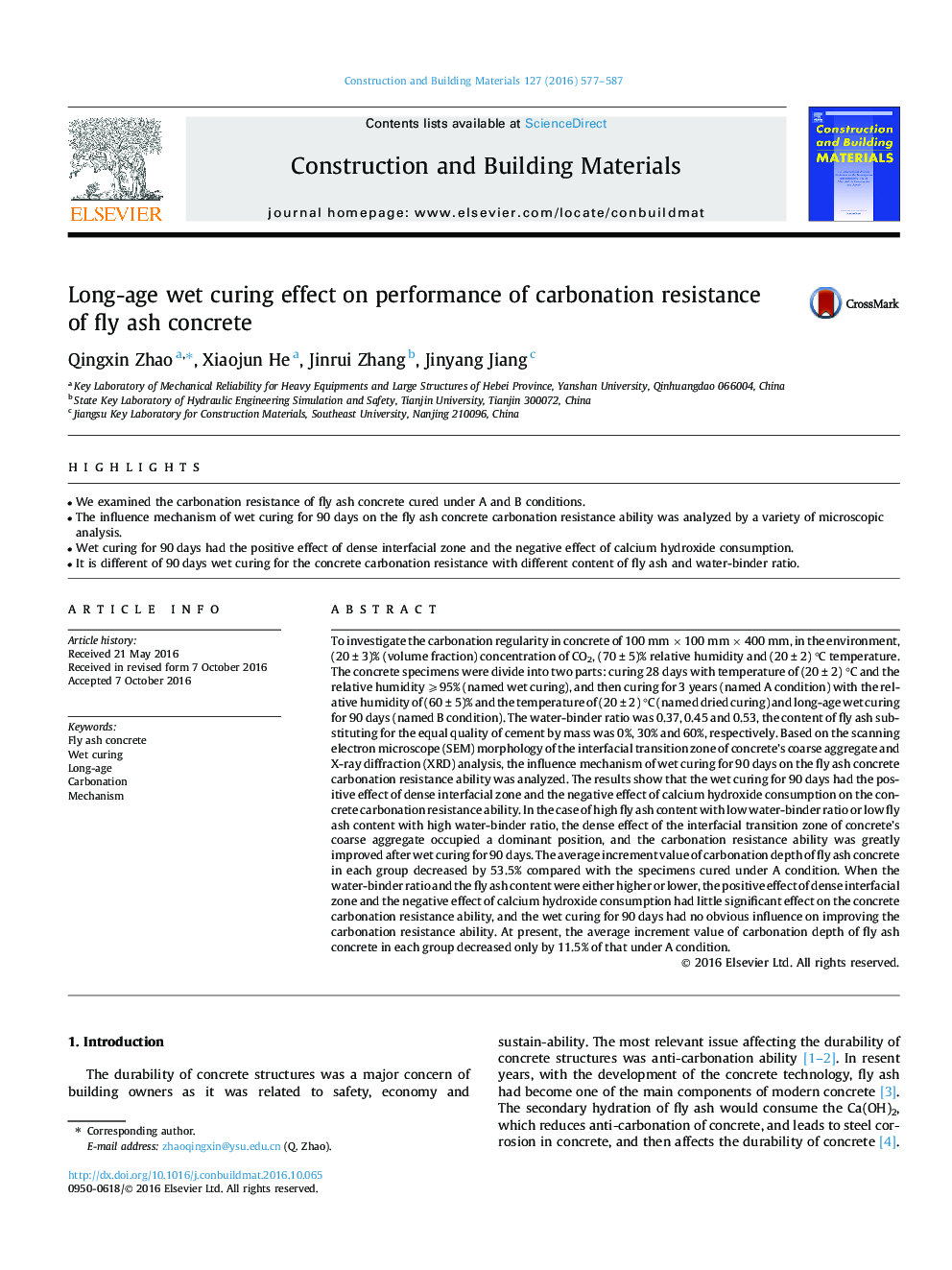| Article ID | Journal | Published Year | Pages | File Type |
|---|---|---|---|---|
| 4913971 | Construction and Building Materials | 2016 | 11 Pages |
Abstract
To investigate the carbonation regularity in concrete of 100 mm Ã 100 mm Ã 400 mm, in the environment, (20 ± 3)% (volume fraction) concentration of CO2, (70 ± 5)% relative humidity and (20 ± 2) °C temperature. The concrete specimens were divide into two parts: curing 28 days with temperature of (20 ± 2) °C and the relative humidity ⩾95% (named wet curing), and then curing for 3 years (named A condition) with the relative humidity of (60 ± 5)% and the temperature of (20 ± 2) °C (named dried curing) and long-age wet curing for 90 days (named B condition). The water-binder ratio was 0.37, 0.45 and 0.53, the content of fly ash substituting for the equal quality of cement by mass was 0%, 30% and 60%, respectively. Based on the scanning electron microscope (SEM) morphology of the interfacial transition zone of concrete's coarse aggregate and X-ray diffraction (XRD) analysis, the influence mechanism of wet curing for 90 days on the fly ash concrete carbonation resistance ability was analyzed. The results show that the wet curing for 90 days had the positive effect of dense interfacial zone and the negative effect of calcium hydroxide consumption on the concrete carbonation resistance ability. In the case of high fly ash content with low water-binder ratio or low fly ash content with high water-binder ratio, the dense effect of the interfacial transition zone of concrete's coarse aggregate occupied a dominant position, and the carbonation resistance ability was greatly improved after wet curing for 90 days. The average increment value of carbonation depth of fly ash concrete in each group decreased by 53.5% compared with the specimens cured under A condition. When the water-binder ratio and the fly ash content were either higher or lower, the positive effect of dense interfacial zone and the negative effect of calcium hydroxide consumption had little significant effect on the concrete carbonation resistance ability, and the wet curing for 90 days had no obvious influence on improving the carbonation resistance ability. At present, the average increment value of carbonation depth of fly ash concrete in each group decreased only by 11.5% of that under A condition.
Keywords
Related Topics
Physical Sciences and Engineering
Engineering
Civil and Structural Engineering
Authors
Qingxin Zhao, Xiaojun He, Jinrui Zhang, Jinyang Jiang,
